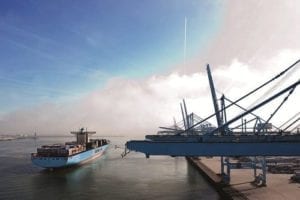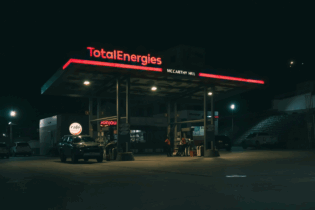“Over the next five years, we will spend $1 billion in retrofitting existing vessels in our fleets. We will take a hundred vessels and change the propellers to get them down to a lower speed. The world has slowed down from a shipping perspective quite considerably since the 2008/9 financial crises and the industry has had to look at different forms of innovation to save costs.
“The shipping industry is using different types of paints on the hulls of its vessels to reduce drag and limit the amount of barnacles. These initiatives make a big difference. There are also heat recovery systems being used where hot air generated by vessels is re-used in propulsion. It is possible to improve engine efficiency by 12% in this way. “We have a control room in the Philippines where we manage and track 600 vessels 24/7. Some of the bigger vessels will have, on average, 2 800 sensors. The data tells us, in real time, what the most efficient way to operate a ship is. Big data means big savings, both from a cost perspective and from a Co2 and emissions perspective. “Changes have been made in emission control areas too, such as legislation that promotes the use of low sulphur fuels. This legislation has been in place in North America for a number of years and has been introduced in Europe as well, but sadly, not in South Africa – yet. These are the sorts of initiatives and regulations that we are keen to see being enforced; provided it’s on a level playing field that allows us to operate the same way as our competitors in these particular markets. “Fuel consumption on a ship rises exponentially in relation to speed. As an industry, we’re slowing ships down. Until about 2007/8 we’d operate ships in an economical network between 22 and 24 knots. Today we operate in the same network at speeds between 16 and 18 knots. We’re adding about 5 or 6 days to longer journeys – for example, between Asia and Europe. If we speed up vessels to reduce storage costs, fuel consumption will increase three-fold relative to those costs. So slow steaming is the new normal. “We won’t see the massive triple E ships in South African ports anytime soon, as there is not the same demand for that size of the vessel here. The 6 500 TEU ships that were built around the turn of the century were once the biggest ships in the world and we thought we’d never see vessels that size coming to South Africa. “But now they do and, if loaded correctly, can make a huge contribution to fuel and emissions reduction. You don’t necessarily need the very large vessels to make a contribution in this market,” he concluded.
“As consumers, we want to do things that are good for the environment, but who is prepared to pay more for it,” asked Safmarine Southern Africa MD, Dirk Hoffmann, during the Transport Forum Special Interest Group on Sustainable Transport last week.
Few people in the audience raised their hands. “We’ve found that nobody is prepared to say they are happy to pay a little bit more to be more environmentally conscious. This is perhaps not unique to South Africa. If we look from our global customer’s perspective, only about a quarter of them would say environmental or sustainability measures made them support one business over another.
“To us, sustainable transport means having the licence to grow your business responsibly, enabling trade and looking at different communities. It’s not only about Co2 emissions.
“Being a responsible partner is not only about sustainability, it’s also the view that we take on corruption, the way that we procure services, our attitude towards the health and safety of our people and our customers, the recognition we have of human and labour rights and our preference for proper regulatory compliance. We see regulations and compliance as a competitive advantage in our business.
“Shipping has a huge impact on the environment and creation of a cleaner planet, with 90% of all traded commodities transported by sea. Shipping has the lowest environmental impact of the four transport modes. But while it is a clean form of transportation relative to other modes, we still pollute a lot and that is where our responsibilities lie. Our business pushed out 27 million tonnes of Co2 emissions in 2014, which is simply not good enough.
“In response, we’ve built a series of very large new container ships. In total, we’ll build 30 18 000 TEU ships. Of course, the bigger the ship, the better the efficiencies. But it’s not only about building new, modern ships.









